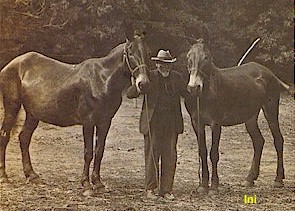|
We also have jack and mule results from the 1904 World's Fair |
|
Much wealth had been brought to the
state of Missouri through successful breeding and trading of mules. Demand for mules began to soar exponentially as
improved technologies allowed for improved cotton production in the South. The Missouri Mule had proven to be most practical
for the strenuous work to be performed. However,
Missouri county reports of 1865 began to tell of the devastation of Missouri's Mule
industry by the Civil War.
Due
to war efforts, agricultural needs for the Missouri Mule came to a screeching halt. Instead, mass numbers of mules were desired to
help both the Union and Confederate armies. Most
of the time, Missouri breeders found that most of their mules were simply taken
by one side or other. To make matters even
worse, mules that once brought in $150 per animal had dropped to a trading price of around
$61.
Mule
production lowered to satisfy the needs of surrounding counties and the home state. Many farmers had grown accustomed to the use of
mules. Keeping horses had become an unsafe
practice during the war. A writer for Monroe
County described the war conditions as a “mule depression”. Some breeders, such as those from Livingston
County, found that a higher priced market existed in the West. California, Oregon, Idaho, and Montana were less
affected by the war and provided the higher priced mule demand Missouri breeders were
looking for. As the Civil War came to an end, the South was found in the midst of Reconstruction. Return to normalcy in the agriculture realm was slow, but also promising. As fields began to prosper once again, the demand for the Missouri Mule rose astronomically. Prices rose back to the pre-war levels. However, it took many years for Missouri's agriculture to recover from the devastation of the Civil War.
An old war Veteran proudly shows his mules. |
| Reference - Ashton, John. 1924. History of Jack Stock and Mules in Missouri. Missouri State Board of Agriculture. Volume XXII, Number VIII. |
